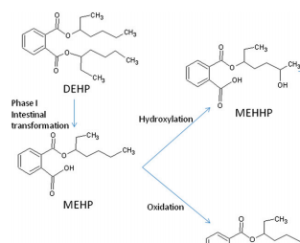Studies Link Plastic Food Packaging To Diabetes, Obesity Risks In Kids
 Because there are apparently not enough studies to convince the Food and Drug Administration that controversial chemical Bisphenol-A (BPA) should not be used in just about every form of food packaging, yet another study has been published linking BPA to childhood obesity. Meanwhile, a separate study released today showed a possible connection between a widely used plasticizer and diabetes.
Because there are apparently not enough studies to convince the Food and Drug Administration that controversial chemical Bisphenol-A (BPA) should not be used in just about every form of food packaging, yet another study has been published linking BPA to childhood obesity. Meanwhile, a separate study released today showed a possible connection between a widely used plasticizer and diabetes.
Both studies are to be published in the September 2013 edition of the journal Pediatrics and are currently available for free online.
The first study [PDF] investigated the relationship between levels of BPA in urine and subjects’ body mass index (BMI), as well as other chronic disease risk factors.
BPA is a chemical commonly used in food and beverage packaging in the U.S., though it has recently been banned for use in the making of baby bottles and infant formula packaging.
Researchers looked at around 3,300 Americans between the ages of 6 and 18, comparing their urinary BPA to measures of adiposity, cholesterol, insulin, and glucose. Results were adjusted for variables like demographics, tobacco exposure, and soda consumption.
They found that the children with the highest levels of urinary BPA also had better odds of being obese and of having waistlines out of proportion to the subject’s height. This study did not find a link between urinary and other chronic disease risk factors.
In general, critics of the study bring up two major objections. First, that urinary BPA levels don’t give any indication on whether BPA is actually being absorbed by any organs or tissues as it moves through the body, or if it’s moving through the body without having any effect. Second, some critics contend that the high level of obesity may be due to these people simply eating more food than others.
Earlier this summer, lawmakers in Washington introduced legislation that would phase out the use of products containing BPA, though it is unlikely to pass.
The other study [PDF] published in Pediatrics looks at the possible relationship between DEHP, a phthalate often found in plastics like PVC, and higher levels of insulin resistance, a precursor for diabetes. DEHP is often used in the softening of plastic soda bottles.
DEHP has previously been linked to insulin resistance in adults, but this research sought to see if the same findings held for adolescents.
Researchers looked at data from 766 blood and urine samples taken from adolescents aged 12 to 19 between 2003 and 2008. Among those subjects with the lowest concentration of DEHP in their systems, the rate of insulin resistance was less than 15%. On the opposite end of the spectrum, 22% of teens with the highest levels of DEHP were found to be insulin-resistant.
The researchers hesitate to draw a straight line between DEHP consumption, admitting that it’s possible that insulin-resistant adolescents may simply be consuming more foods containing DEHP, or that they are excreting a higher level than those who are not insulin-resistant.
Want more consumer news? Visit our parent organization, Consumer Reports, for the latest on scams, recalls, and other consumer issues.

